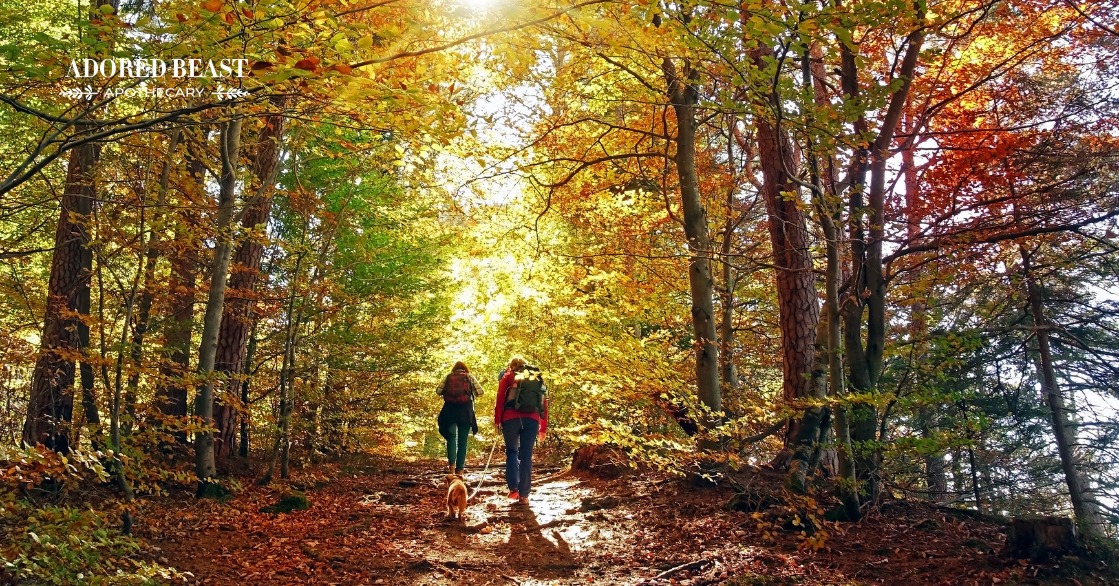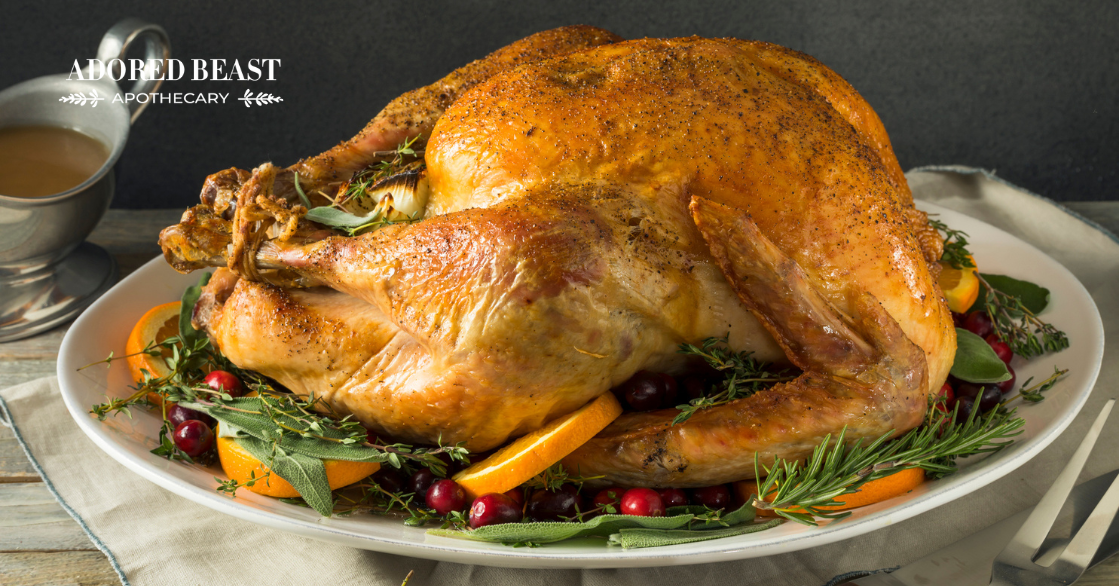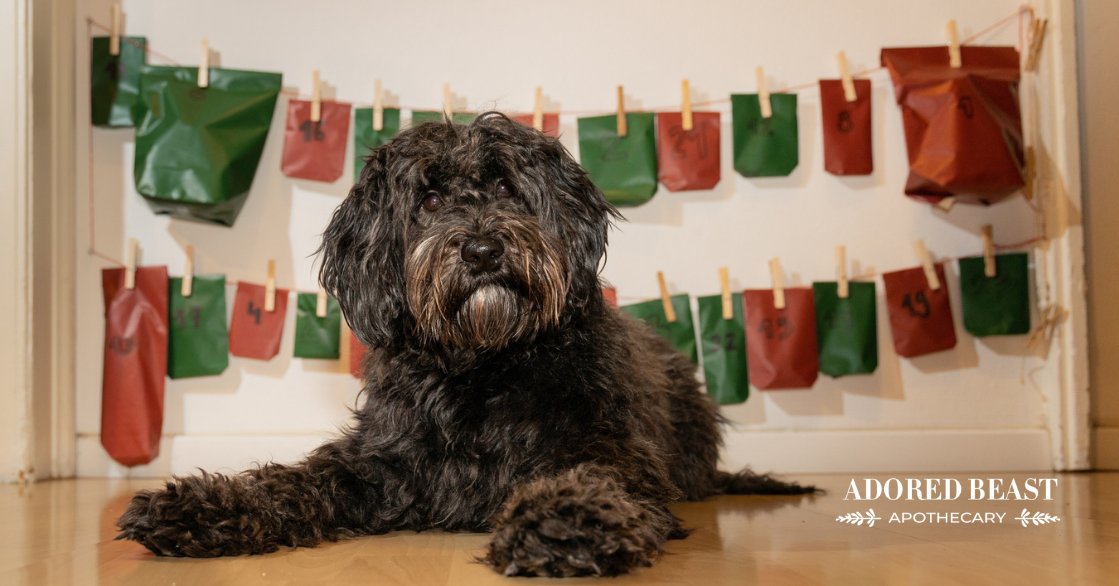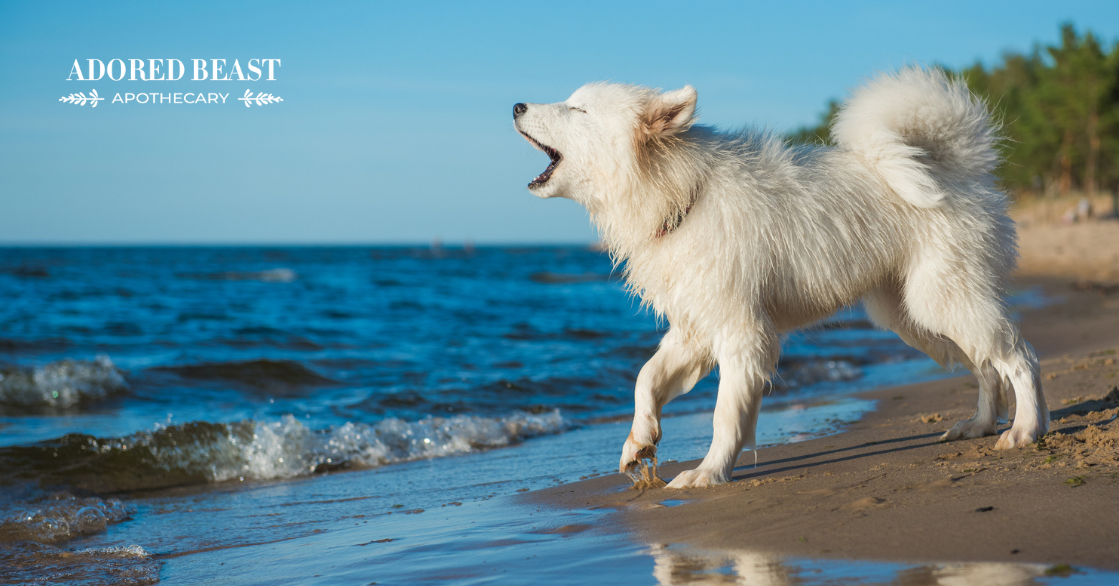There’s truly nothing like a fall hike. All year round we take our pups out into the woods to hike the trails and adventure through the forest. But this time of year is our absolute favourite. The weather is cool and easy to dress for, and the leaves are changing, presenting us with this visual dreamscape like nothing else in the world.
But before we head out to the trails, we’re always careful to go through a checklist to make sure we’re safe. This week, we’re talking the top tips for fall hiking with your dog.
6 Tips for Fall Hiking with Your Dog
1. Assess Your Dog
You never want to overdo it – and your dog likely won’t tell you – so make sure your animal is ready for whatever hike you’re about to take. Consider breed, age, and regular activity level. Cater your adventure to them. You don’t want the hike to be too much, or for them to get hurt from overexertion. You don’t want to end up with a dog who’s so sore they can’t move the next day.
Additionally, while hiking, pay close attention to behaviour. If they seem to be slowing, take a break. Always listen to your pup!
2. Plan Your Route
You want to be sure you can do what you want on the trail, and that you’re not driving a ways only to get to a trail that isn’t open, or is not dog-friendly. Research locations before setting out to ensure your dog will be welcomed. Additionally, even if a certain trail or park is dog-friendly, you may be required to keep your dog leashed at all times. If you’re looking to let your dog roam a little more freely, keep this in mind and perhaps find a different spot.
Also, in many areas, fall is prime hunting season, and it’s easy to mistake a dog rustling in the bushes for other wildlife. Be sure to know when your local hunting season is and if hunting is allowed where you will be hiking. If it is allowed, consider a different area, or make sure that both you and your dog are wearing bright coloured (orange or yellow) clothing/vests to ensure hunters see you, and recognize you.
And – once you’ve decided, be sure to tell someone else where you’re going, when you’ll be leaving, and when you expect to be back!
3. Carry a First Aid Kit
Just in case of emergency, you want to be prepared. There are a few essentials you’ll need in that kit:
- Gauze or cotton swabs (not cotton balls! they leave little strands and can cause infection)
- Non-stick bandages or wraps
- Medical tape
- Scissors
- A tick removal tool (here’s how to use it properly)
- Tweezers
- A towel or cloth
- Clean water
- Saline solution (make your own by adding 1/4 teaspoon of table salt to one cup of purified water)
- Packages of electrolytes (without xylitol or aspartame). This can be really helpful if there is dehydration and you are far away backpacking until you get to a vet.
- A needle-less syringe (for easy administration of electrolytes)
A herbal salve or tincture of any of the following is also important to have on hand for cuts and scrapes, burns, even insect bites. These herbs are our go-tos:
- hypericum – helps to improve and increase tissue regeneration in wounds and is also well-known for its abilities to tone and restore the health of nerves, in addition to soothing skin irritations
- goldenseal – antibacterial, can assist with the healing of skin conditions such as rashes, ulcers, wounds, infections, itching, eczema, and ringworm
- green tea – anti-inflammatory, anti-bacterial, and anti-viral properties
- horsetail – effective at helping the body heal burns, wounds, and sores, anti-inflammatory properties and can help stabilize and heal scar tissue.
- calendula – can help wounds heal faster by regenerating tissue
To use a tincture, add a few drops to a spray bottle, shake, and and spray the area, or soak a cotton swab and apply to the wound. If your pet is afraid of the spray sound it’s best to use a cotton swab.
4. Stay hydrated
Even though it may not be super hot out, we all need to stay hydrated when we’re actively moving our bodies. And this goes for both you and your pup. Be sure to carry water with you, and a bowl of some sort for your pet to drink from.
5. Bring Poop Bags
The name of the game here is Leave No Trace. You want to leave the trail just as you found it, and that means taking anything with you that you bring in. And yes, that includes poop! If you’re worried about a breach, double-bag on the trail, then remove any intact outer bags after you get home.
6. Other Essentials
Think about anything else you might need while on the trail. These are especially important if you’re going for a long hike, or will be far from home:
- a towel for clean up or after a swim
- booties if the terrain is very rocky
- a small blanket (or emergency thermal blanket) if it gets cold
- a flashlight or headlamp in case you get stuck out past dark
- some snacks for yourself and for your pup
- water filtration tablets or some type of filtration device
- matches or a lighter and an emergency candle
A seasonal hike is often just what we need for a mental and physical refresh! Use these tips for a successful and stress free day of fall hiking with your dog! Enjoy.












